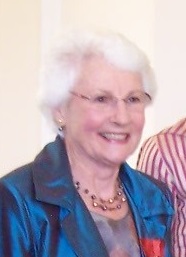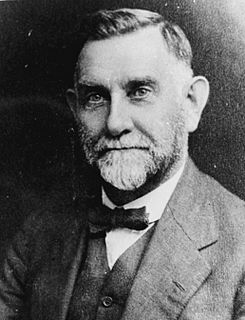Forest & Bird, also known by its formal name as the Royal Forest and Bird Protection Society of New Zealand Inc., is an environmental organisation specialising in the protection and conservation of New Zealand's indigenous flora and fauna and unique wild places and natural ecosystems. Forest & Bird consists of 47 branches located in urban and rural centres throughout New Zealand. Branches are actively engaged in conservation projects and advocacy on a community, regional and national basis. Forest & Bird has offices and staff located in Auckland, Christchurch, Wellington, Nelson and Dunedin. Forest & Bird publishes a quarterly magazine Forest & Bird, one of New Zealand's definitive natural history and conservation publications.

Lieutenant General Sir William Francis Drummond Jervois was a British military engineer and diplomat. After joining the British Army in 1839, he saw service, as a second captain, in South Africa. In 1858, as a major, he was appointed Secretary of a Royal Commission set up to examine the state and efficiency of British land-based fortifications against naval attack; and this led to further work in Canada and South Australia. From 1875 to 1888 he was, consecutively, Governor of the Straits Settlements, Governor of South Australia and Governor-General of New Zealand.

Margaret Elizabeth Austin is a former New Zealand politician. She was an MP from 1984 to 1996, representing first the Labour Party and then briefly United New Zealand.
An equerry is an officer of honour. Historically, it was a senior attendant with responsibilities for the horses of a person of rank. In contemporary use, it is a personal attendant, usually upon a sovereign, a member of a royal family, or a national representative. The role is equivalent to an aide-de-camp, but the term is now prevalent only in the Commonwealth of Nations.

The Royal Society Te Apārangi is an independent, statutory not-for-profit body in New Zealand providing funding and policy advice in the fields of sciences and the humanities.
Daniel Frank Walls FRS was a New Zealand theoretical physicist specialising in quantum optics.
Arthur William Baden Powell was a New Zealand malacologist, naturalist and palaeontologist, a major influence in the study and classification of New Zealand molluscs through much of the 20th century. He was known to his friends and family by his third name, "Baden".

Charles Chilton was a New Zealand zoologist, the first rector to be appointed in Australasia, and the first person to be awarded a D.Sc. degree in New Zealand.
Raymond Robert Forster,, was an arachnologist and museum director from New Zealand.
The Hector Medal is a science award given by the Royal Society of New Zealand in memory of Sir James Hector to researchers working in New Zealand. It is awarded annually in rotation for different sciences – currently there are three: chemical sciences; physical sciences; mathematical and information sciences. It is given to a researcher who "has undertaken work of great scientific or technological merit and has made an outstanding contribution to the advancement of the particular branch of science." It was previously rotated through more fields of science – in 1918 they were: botany, chemistry, ethnology, geology, physics, zoology. For a few years it was awarded biennially – it was not awarded in 2000, 2002 or 2004.
The Royal Astronomical Society of New Zealand (RASNZ) is the New Zealand national astronomical society. It is an association of professional and amateur astronomers with the prime objective to the promotion and extension of knowledge of astronomy and related branches of science.

A total solar eclipse occurred on Tuesday, September 8, 1885. A solar eclipse occurs when the Moon passes between Earth and the Sun, thereby totally or partly obscuring the image of the Sun for a viewer on Earth. A total solar eclipse occurs when the Moon's apparent diameter is larger than the Sun's, blocking all direct sunlight, turning day into darkness. Totality occurs in a narrow path across Earth's surface, with the partial solar eclipse visible over a surrounding region thousands of kilometres wide. The path of totality crossed New Zealand.

Amphitheatre Glacier is a moraine-covered glacier that flows north from The Amphitheatre into Roaring Valley, in the Royal Society Range of Antarctica. It was named by a New Zealand Geographical Society field party in the area, 1977–78, in association with The Amphitheatre.
Roger Shepherd Duff, was a New Zealand ethnologist and museum director.

Gregor William Yeates, publishing as GW Yeates, was a New Zealand soil zoologist and ecologist. He was "considered the world's leading authority in soil nematode ecology, a subject of economic and ecological importance."
Marston Donald Edward Conder is a New Zealand mathematician, a Distinguished Professor of Mathematics at Auckland University, and the former co-director of the New Zealand Institute of Mathematics and its Applications. His main research interests are in combinatorial group theory, graph theory, and their connections with each other.
Richard Ellis Ford Matthews was a New Zealand plant virologist.
Peter Wardle was a New Zealand botanist.

Colin James Ness Wilson FRS FRSNZ is Professor of Volcanology at Victoria University of Wellington in New Zealand.
Corybas cryptanthus, commonly known as the hidden spider orchid or icky, is a species of terrestrial orchid endemic to New Zealand. It has no obvious leaves and the mostly white flower is usually buried in leaf litter. The plant is usually only detected by its fruiting capsule which is borne on a stem which elongates up to 280 mm (10 in) high.









